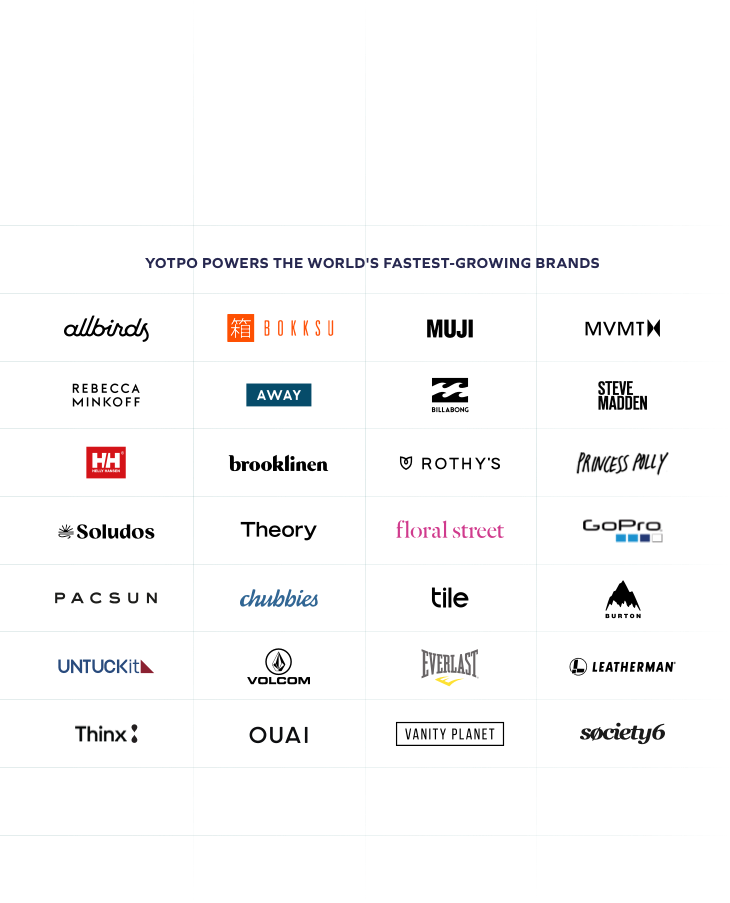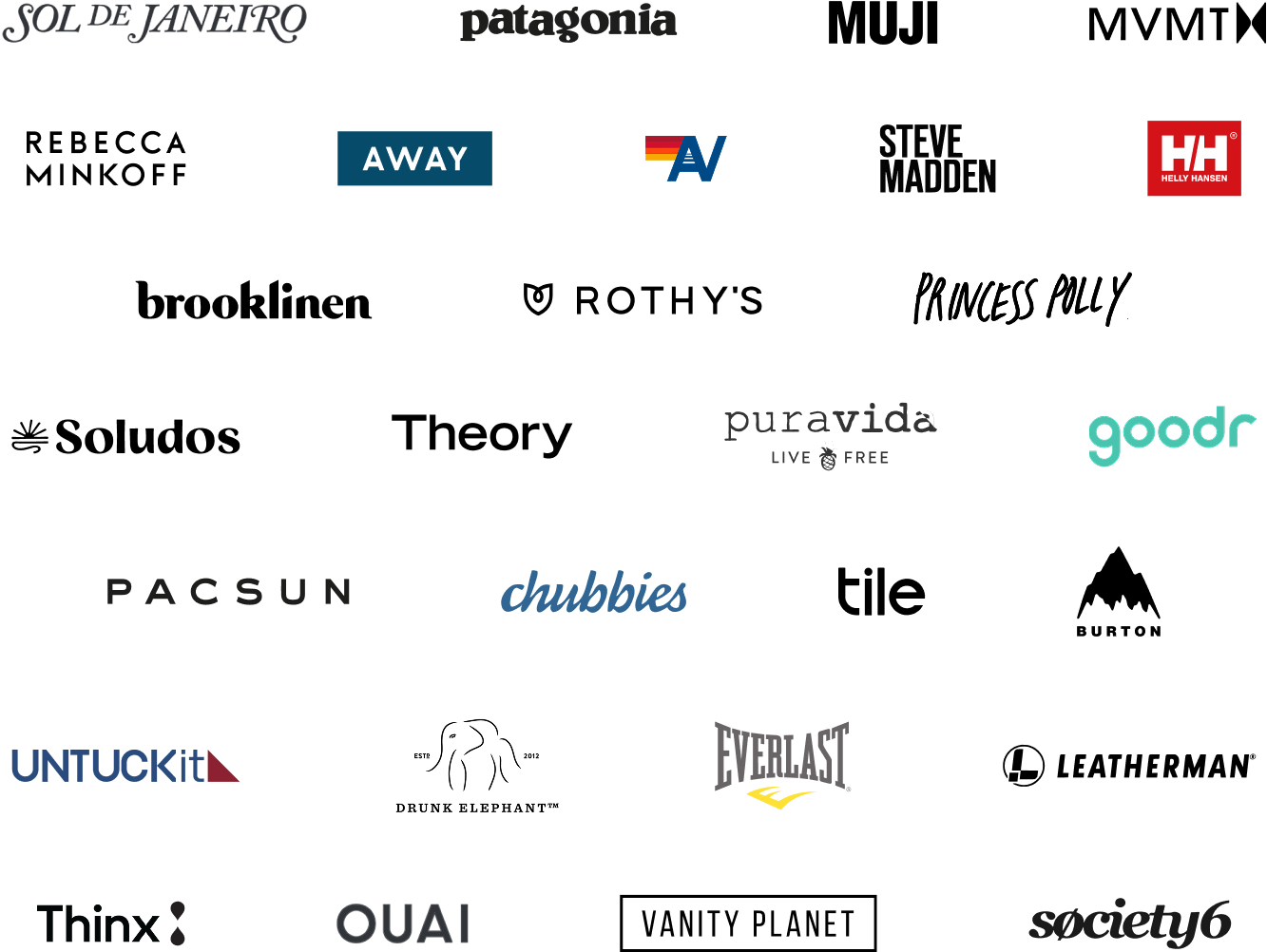Average Order Value (AOV) is a standard eCommerce metric that provides a snapshot of your digital marketing strategy’s success or gaps. With so many transactions taking place, it’s paramount for online businesses to analyze the right performance indicators like AOV to grow and provide a better shopping experience for their customers.
Before you can truly integrate AOV measurements into your business, you need to first understand what, exactly, AOV means, how to measure it, and strategies that will help improve it.
What Is Average Order Value (AOV)?
Often referred to as AOV, Average Order Value is a core performance metric of eCommerce businesses. While the definition of AOV can be tweaked for different business goals, it primarily refers to the number of purchases per buyer over a specific time period. More simply, it’s the average amount spent each time a customer places an order.
AOV is one of the easier metrics to measure as it involves data points that can be collected on even the most basic online shopping platforms.
with Yotpo
Why Does AOV Matter to eCommerce Brands?
AOV is an extremely effective top-line measure of eCommerce success and can help with strategies surrounding pricing, selection of merchandise, visibility of products, and presentation of those products to the target audience.
The most significant benefit of AOV is that it provides a high-level view of what your marketing and advertising budget should be. Consistently tracking this metric allows digital marketers to test out variables ranging from website UX, cross-sell and upsell tests, and new target audiences to go after.
When combined with other traditional eCommerce metrics like customer acquisition cost, customer lifetime value, cart abandonment rate, and overall sales conversion rate, teams have a robust data set to grow the business, improve customer satisfaction, and really hone in on key brand engagement points.
AOV Formula: How to Calculate Average Order Value
Before we get into methods of increasing AOV, let’s take a look at the formula required to calculate AOV. It’s a two-step process that involves adding up your total revenue, then dividing it by the total number of orders. The number you’re left with is the average order value.
For example, $50,000 (total revenue)/ 500 (total number of orders) = $100 (AOV).
Keep in mind that AOV is not based on unique customers but individual orders. It also doesn’t take into consideration factors like gross profit or profit margins. For example, an entire business can be run with a few repeat customers who make multiple large purchases in any given period of time; however, AOV would not count for the number of customers but instead the number of orders placed.
7 Strategies to Increase AOV
Now that we’ve covered the basics of AOV and why it’s important for your eCommerce business, let’s take a look at the many easy-to-implement ways to increase it.
1. Let Other Customers Be Your Best Marketers With Social Proof
When it comes to onsite marketing, nothing beats the power of social proof in the form of customer reviews and user-generated content. Social proof is the phenomenon when shoppers are heavily influenced by the thoughts and experiences of other shoppers. It’s why successful eCommerce businesses always provide a platform for customers to leave reviews, star ratings, and user-generated photos and videos.
So how much can this impact your average order value? Swimwear brand Cupshe reports that customers who interact with reviews or user photos have a 10% higher order value than those that don’t. Similarly, when Dakine added UGC across their product pages, they raised their average order value by 20%.
2. Implement Free Shipping Thresholds
Free shipping is synonymous with online shopping, but it doesn’t have to be a giveaway from the seller’s perspective. Place a monetary threshold for customers to get free shipping, so that they have to spend a certain amount of money (ideally an amount that covers the average cost of shipping per order) in order to receive the perk, generally $75 to $99 for smaller independent online sellers.
3. Bundle Products Into Must-Have ‘Kits’
When’s the last time you bought individual kitchenware? Most customers are enticed by the convenience and overall value of buying multiple related products together — especially when it comes to online shopping. Bundling similar products together and offering a discount when they’re bought as a unit versus individually is a great way to increase AOV while providing value to shoppers.
4. Cross-sell & Upsell at Every Opportunity
Like bundling products together, upselling and cross-selling products is a strategic way to increase AOV and provide visibility to a wider range of SKUs.
Upselling means strategically placing more expensive items in front of the customer at the product level or during checkout. Take cell phone plans for example: a customer might have originally chosen an entry-level cell phone with 32GB of storage, but an option with 64GB is placed on the same page and advertised as an upgrade for just a few dollars more.
Cross-selling is the act of promoting items related to a customer’s intended product choice. We can use mobile devices as an example here as well. As a customer is checking out a phone, a selection of phone cases or Bluetooth headphones might be placed on the same page to entice customers to buy everything they might need in one go.
Yotpo has features that are perfect for both strategies, including related product review widgets that integrate with your email strategy for increased AOV — and they can even help with cart abandonment.
5. Build Loyalty Programs That Encourage Purchases
Loyalty programs that include coupons and discount offers are a great way to increase AOV because they entice customers to come back for more or add more items to their orders to reach certain “VIP” tiers. Companies like Sol de Janeiro use a rewards program to urge shoppers to return to the site more often, buy more frequently, and share exclusive coupons and offers.
Brands can also implement “punch card” campaigns that increasingly rewards customers for making larger purchases, thus enticing them to add more to their cart. All of these tactics build overall loyalty and help grow AOV over time.
6. Provide More Relevant, Personalized Shopping Experiences
Personalized experiences have become a common customer demand and expectation. 66% of consumers won’t purchase from a brand that hasn’t tailored their website to their individual interests.
The good news: modern AI-powered tools provide not only personalized experiences for customers, but give retailers the ability to quickly and easily analyze data to gain deeper insights into various shopper segments and provide more unique eCommerce experiences on the fly. Yotpo offers many such features for its suite of tools. Brands can automatically showcase their most valuable and relevant reviews through AI-powered widgets or use repeat purchase prediction to target segments of customers who are highly likely to purchase again with higher value items.
From a product discovery and order value perspective, personalizing both the content and product recommendations for each shopper improves their overall onsite experience, while also drawing them towards the checkout page.
7. Test and Validate All of Your Strategies
Making changes to increase AOV is essential, but validating your efforts is just as important to ensure you’re making impactful changes. In other words: drive decisions based on data rather than your gut instinct.
Enter A/B/n testing, which allows you to test and validate various elements — or entire experiences — on your website to learn what resonates best with shoppers. In real time, machine learning guides traffic to the test variants that are performing best, meaning that the potential loss in revenue from testing is minimized. Homeware retailer Urbanara used A/B/n testing to drive higher AOV and increase conversion rates on Shopify — a strategy which led to a 94% increase in conversion for shoppers who had personalized onsite experiences.
Of course, not all tests are conclusive, and sometimes there won’t be a general winning variant. However, you can often delve deeper into the data and discover that, in fact, certain segments did have stronger reactions to certain variants. Through A/B/n testing, marketers are able to experiment with and optimize their AOV strategies in real time with minimal risk to sales — all the while gaining valuable insights into the behaviors of certain customer segments.
Improving your eCommerce brand’s AOV is a crucial step in maturing your business, and Yotpo has a wide array of tools to help. Whether you want to add reviews and social proof to your site to push shoppers towards checkout, or create a loyalty program that easily rewards customers for purchases, Yotpo can help. Click here to get started.















 Join a free demo, personalized to fit your needs
Join a free demo, personalized to fit your needs